





Seabass
Seabass – the fish belonging to family of groupers. Has names: лаврак, grouper, койкан, Lubina, branzino, раньо, spigola. Lives in the Atlantic Ocean, the Black and Mediterranean seas, young fishes hug the shores, packs, more adult individuals prefer to hunt alone. The seabass eats small fish, Crustacea and mollusks, sharply attacking and sucking in production by a big mouth.
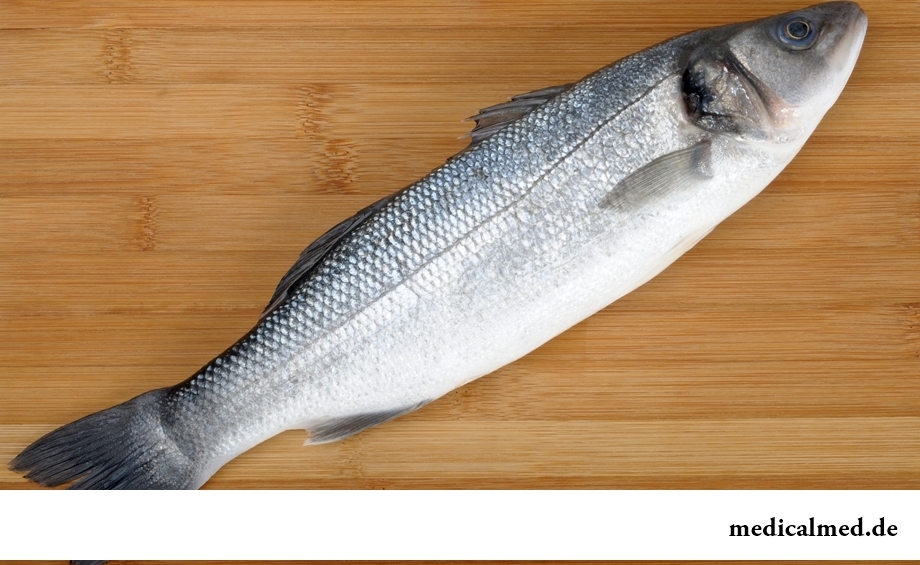
Has the extended body from silvery color sides and a white belly. The back of a young seabass is covered with black specks. Gills of fish are protected by the rigid "lids" covered with small prickles and cloves. Has well outlined sideline passing on all body an equal strip.
Length of fish can reach 1 m, weight - 12 kg. Nevertheless, length of a trade seabass fluctuates from 25-45 cm, and weight seldom exceeds 1 kg. Some producers - for example, France, can offer a seabass of larger sizes.
Since recent time the seabass is one of actively divorced breeds in Europe. This trade is especially popular in France, Spain, Italy, Turkey. Grow up a seabass as in natural reservoirs with salty water, and in artificial pools. The most part of a seabass presented at the market is grown up in fisheries, using special forages, however, has the real value, so-called "wild protein" - the fish hooked at liberty, eating not compound feed, and plankton.
Fatness of a seabass depends on a caviar throwing season. Spawning of fish usually lasts several months, from May to July therefore catching of the most tasty seabass begins in the fall, from July to October.
Useful properties of a seabass
Useful properties of a seabass, as well as any sea fish, are caused, first of all, by high content the Omega-3 of fatty acids. This substance has the powerful antiinflammatory effect capable to protect an organism from cancer and diseases of cardiovascular system. Polyunsaturated acids are fine antioxidants, promoting removal from an organism of free radicals and harmful substances. It is scientifically proved that the Omega-3 fatty acids speed up work of a brain, heart, an eye, joints, reducing cholesterol level in blood, improving a condition of the person at asthma, eczema, an allergy, a diabetes mellitus, psoriasis, Alzheimer's disease, arthrosis, osteoporosis, cardiovascular problems.
Caloric content of a seabass
Caloric content of a seabass is small: only 99 kcal / 100 gram of an edible part of a product. From them:
- Proteins - 72 kcal;
- Fats - 27 kcal;
- Carbohydrates - 0 kcal.
Useful properties of a seabass at weight loss are caused by availability of digestible protein which well is digested in a GIT and does not provoke emergence of extra kilos, and also the Omega-3 of fatty acids which promote stimulation of the enzymes specializing in transportation of fats.
Seabass in cookery
Meat of a seabass belongs to the category of a premium class as it differs in special tenderness and delicate, refined taste. Besides, in fillet of fish there are not enough bones.
In the culinary plan the seabass is considered universal fish - she is equally tasty as in the boiled, fried, baked look, and prepared on a grill together with olives and vegetables.

The seabass in salt enjoys wide popularity. A dish extraordinary appetizingly and just in preparation. Fish is cleaned and gets rid of fins. 1,5 kg of salt mix up with milk or the beaten ovalbumin, without allowing its full dissolution. We pour out an even layer of salt on the baking sheet laid by a foil on all length of fish about 2 cm thick. Further we send a seabass to an oven for 25 minutes, at a temperature up to 210 degrees then we take out a baking sheet, we split salt a knife and we get fish, a strip behind a strip husking with it - as a peel banana. Fillet of the baked seabass in salt is ready!
The most rare disease – a disease the Kura. Only representatives of the tribe Faure in New Guinea are ill it. The patient dies of laughter. It is considered that eating of a human brain is an origin of a disease.

Herpes simplex of the first type (the infectious disease which is shown periodic bubble rashes on is called...
Section: Articles about health
History of use of an anesthesia during operations contains more than 160 years. Annually in the world hundreds of thousands of surgical interventions during which to patients the substances immersing them in a dream and saving from pain are entered are carried out. Using an anesthesia to these...
Section: Articles about health
Sugar - the digestible refined product which is not of special value for an organism of the modern person. The use of sugar in food is based rather on the psychological dependence caused by desire to indulge itself with something tasty, and further and the biological, caused need of an organism for glucose as a result of big emissions of insulin in blood. Such circulation of insulin and glucose with continuous increase in portions of sugar is rather offensive and can become the reason for a narusha...
Section: Articles about health
Bulimia and anorexia, are heavy deviations of a feeding behavior, become a cause of death of patients much more often than all others...
Section: Articles about health
An eye of the person daily experiences considerable strain. The problem of preservation of sight is for many years directly connected with a question of supply of tissues of eye enough oxygen and nutrients. This task is carried out by small vessels – capillaries. For holes...
Section: Articles about health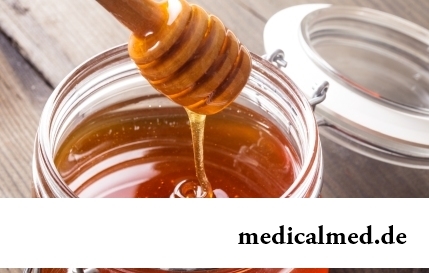
The trophic ulcer is not an independent disease. This heavy complication arising owing to a thermal injury (a burn or a frostbite), chronic pathologies of arteries or veins of the lower extremities, a diabetes mellitus, and also some defeats of connecting fabric, absorbent vessels, skin or nervous trunks. Pathology is shown in the form of not healing wound located on the internal surface of a shin, a foot sole, a heel or toes....
Section: Articles about health
According to doctors, more than a half of men of 25-50 years suffer from frustration of the urinogenital sphere, but sees a doctor from them меньшинс...
Section: Articles about health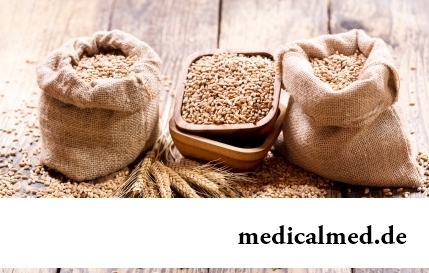
The concept "gluten" (differently, a gluten) combines group of the proteins which are a part of rye, barley and wheat. For most of people the use of the food stuffs containing a gluten not only is safe, but also it is very useful. Nevertheless, there is a number the myth...
Section: Articles about health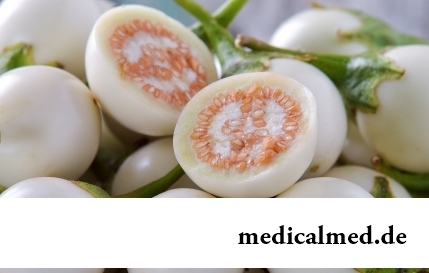
It is possible to find the extensive range of fruit and vegetables in modern shops. Russians already got used that on counters there is not only a seasonal domestic production, but the vegetables and fruit which are grown up in the countries with more comfortable conditions of cultivation at all seasons of the year. However what we see in shops and in the vegetable markets, is only a small part of those edible plants with which the nature is so rich. Today we want to acquaint the reader with rare and very useful vegetables which on...
Section: Articles about health
The winter swimming in open reservoirs called in our country by "winter swimming" – officially recognized sport and one of the ek...
Section: Articles about health
Within several decades of our compatriots convinced that the use of butter nasty affects a condition of coronary vessels. As a result the reputation of a product was impaired thoroughly a little, and many almost ceased to include...
Section: Articles about health
Visit of doctors – business not the most pleasant, and many people do not hurry to undergo necessary planned inspections. Such behavior is extremely thoughtless and improvident. Our health is necessary not only to us: wellbeing of darlings, children, grandsons and aged parents directly depends on as far as we are vigorous and able-bodied. Therefore in time to be inspected – a duty of any modern person. Specialists consider that 7 regular surveys and di are especially necessary for women...
Section: Articles about health
The advantage of swimming for the person is so high that this sport is not only the most popular, but also is widely applied in copper...
Section: Slideshow
We live during an advertizing era. Daily each person receives a solid portion of persuasive councils about what to eat to be healthy and successful. Products about which we will talk today are combined by the following circumstance: all of them are positioned as most...
Section: Articles about health
All got used long ago that, having addressed the plastic surgeon, it is possible to modify natural parameters of a figure or to minimize the damages put to appearance with ruthless time. Many people (preferential women) worldwide annually decide on operations such. However there are also much more exotic interventions which are carried out seldom so far and cost expensive very much. We bring the story about the most unusual of them to your attention....
Section: Articles about health
All diseases from nerves – in this joke a big element of truth, are said by doctors. Constant stresses lead body to decrease in protective forces...
Section: Articles about health
Radiological methods of a research are applied in medicine more than hundred years, and thanks to them millions of lives were saved. In many cases without X-ray it is impossible to make exact idea of a condition of bodies and fabrics, it is correct to make the diagnosis. Those...
Section: Articles about health
Urogenital candidiasis (milkwoman) – a fungal infection which annoys unpleasant feelings in the field of generative organs, being followed by white curdled allocations, an itch, discomfort during an urination, pain. She is called by Candida fungus – the opportunistic organism living on mucous membranes of an organism....
Section: Articles about health
The saying "the rich do not know how the other half lives" is known to all. In a broad sense it is that we can not always understand the person, about...
Section: Articles about health
Traveling all over the world, many try to try the most exotic dishes of national cuisines. There is even a so-called gastronomic tourism which, according to gourmets, not only allows to receive new feelings, but also is capable to show life the friend...
Section: Articles about health
High temperature - a frequent symptom of such widespread diseases as a SARS, quinsy, pneumonia, etc. To reduce heat, having facilitated a condition of the patient, doctors recommend to accept antipyretics, however their use is not always possible. Too frequent use of these drugs can lead to allergic reactions, and also overdose, causing poisoning. It happens also that there are no antipyretics simply in the house. In these situations it is pertinent to use it...
Section: Articles about health
It is pleasant to state a possibility of improvement of quality of life of people with problems of functioning of secretory system. By efforts that...
Section: Articles about health
Any person who faced a disease knows that treatment costs expensive. It belongs also to consultations of qualified specialists, and to the diagnostic procedures which are not included in the list of obligatory medical services. Question of cost of medicinal Wednesday...
Section: Articles about health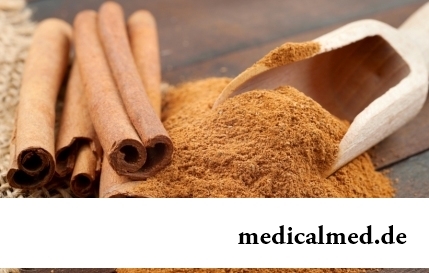
Ayurveda - the most ancient tselitelsky practice which came to us from India. It represents the doctrine about maintenance of physical, psychological and moral health of the person by means of the complex of procedures including a diet, cleaning of an organism, breathing exercises, massage, and in case of a disease - and medicinal therapy. The healers practicing Ayurveda assign very important part to spices, and at the heart of Ayurvedic drugs, as a rule, there are they. It is considered that spices not of t...
Section: Articles about health
On the head of the person about one million hair follicles, or as they are called still, hair bulbs are located. At the moment he is born...
Section: Articles about health
The way of life of people promptly changes from year to year: if about ten years ago the personal computer was not in each family, then today already very few people do without this device. Certainly, and children master the computer at full speed: they not only I play...
Section: Articles about health
Venereal diseases in medicine are called the infections which are transmitted preferential sexually, now they and are called - infections, sexually transmitted, or STD. Among them is also life-threatening. In spite of the fact that the majority of diseases such will respond to treatment, they are widespread everywhere, and there is no tendency to decrease in incidence. Besides, some of them promptly look younger: statistically, a third of young people at the age of 16-22 years of a str...
Section: Articles about health
